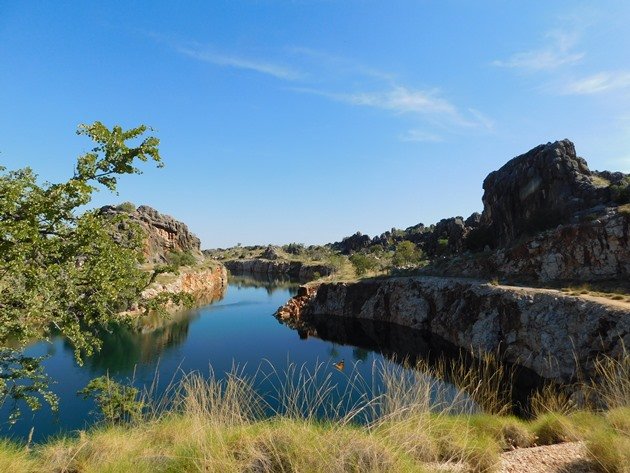
Before our day at Geikie Gorge and Fitzroy Crossing low level bridge we were at Boab Quarry. This huge quarry is as a result of rock being removed from the area to build the RAAF Base at Curtin near Derby in the 1980’s. The location is around ten kilometres along the Fairfield/Leopold Road around forty kilometres to the west of Fitzroy Crossing.
The surrounding landscape is spectacular and the quarry does not always contain water. This year there was good rainfall around Fitzroy Crossing and as a result of that the quarry is very full. The header photo above and the photo below are the views if you go up the track and look down part of the length of the quarry.
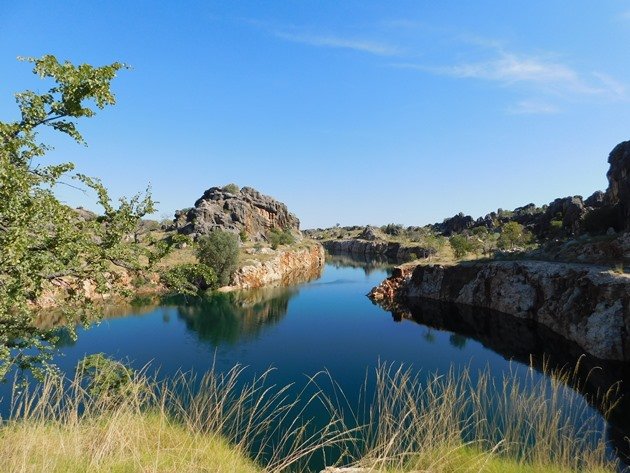
Boab Quarry
The gravel road to the quarry is not always open, so you need to check prior to setting off. It is generally in good condition when it is open. It is one way that you can get to Windjana Gorge if you are coming from Fitzroy Crossing rather than Derby. At the moment the land looks quite lush after the wet season and the boabs still have their green leaves.
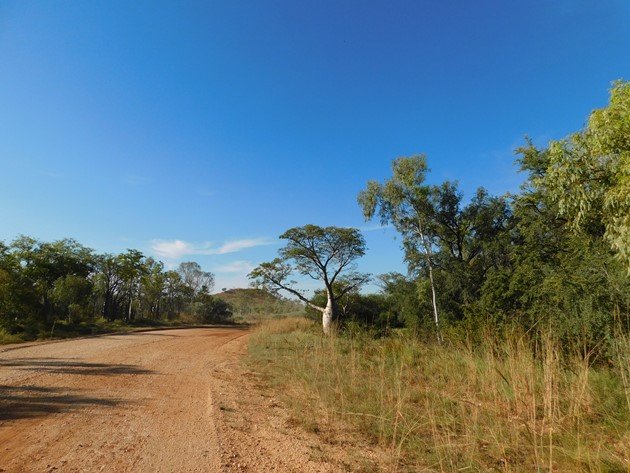
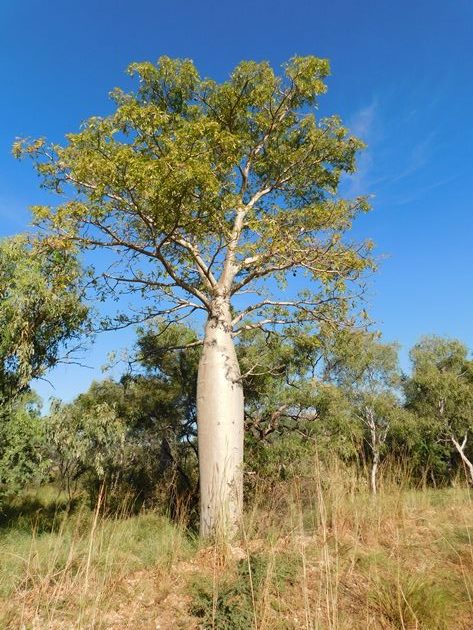
The road to Boab Quarry
One of the more vocal birds at the Boab Quarry is the Great Bowerbird. They are often flying about in groups and the bower that has been built to attract female birds is mostly natural items. The Great Bowerbirds only collect white and green, but they have mostly collected white rocks at this location.
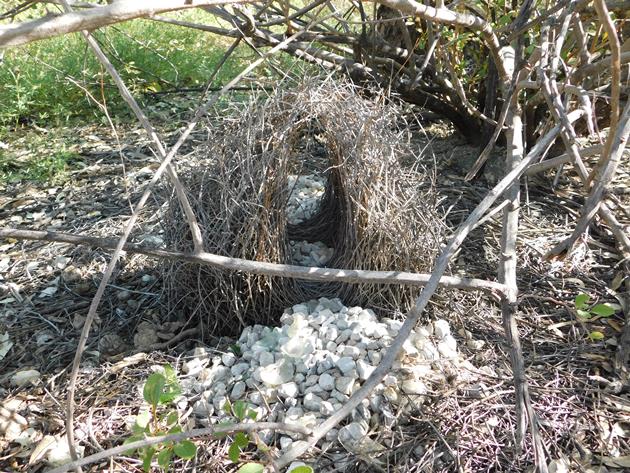
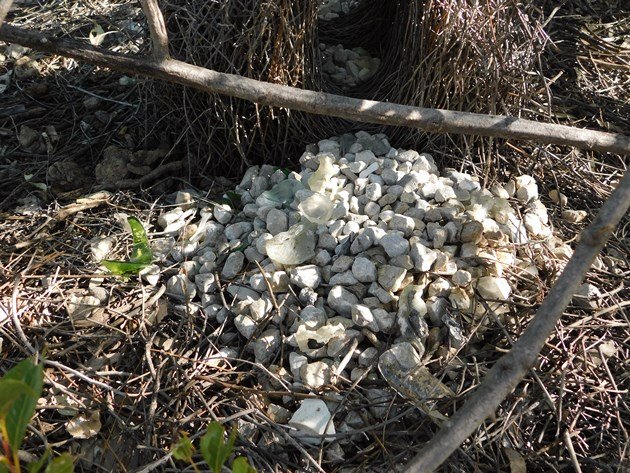
Great Bowerbird bower
The only birds on the water in the quarry on our visit were Australasian Grebes. We discovered that they are actually breeding at the base of a tree that hangs down into the water on the left in the photos above.
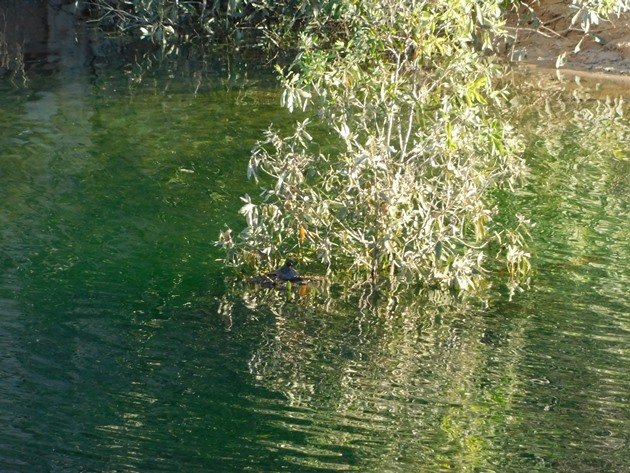
Australasian Grebe on a nest
There is a boab tree that is high up on the rock face that is always popular. A good variety of birds drop by. Whilst we were there we had Rainbow Bee-eaters, Willie Wagtails, Paperbark Flycatcher, Pied Butcherbirds, Red-winged Parrots and a White-faced Heron use it.
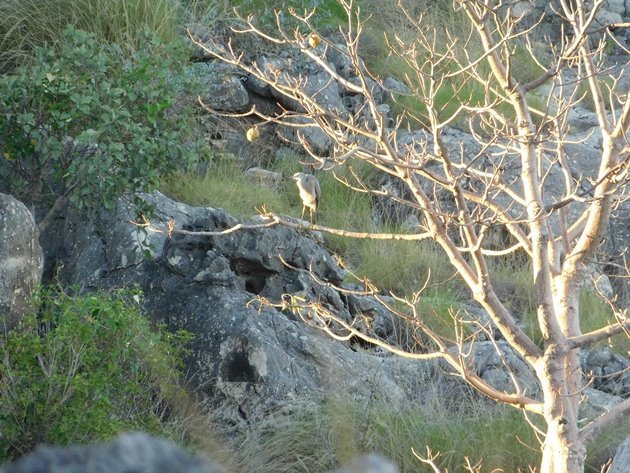
White-faced Heron perched above the quarry
Over the years that we have visited we have found Boab Quarry to be one of the most reliable places for Sandstone Shrike-thrush. It is the closest location to Broome that we have found them. On this occasion we observed several and we were lucky enough to have three in one boab tree at once.
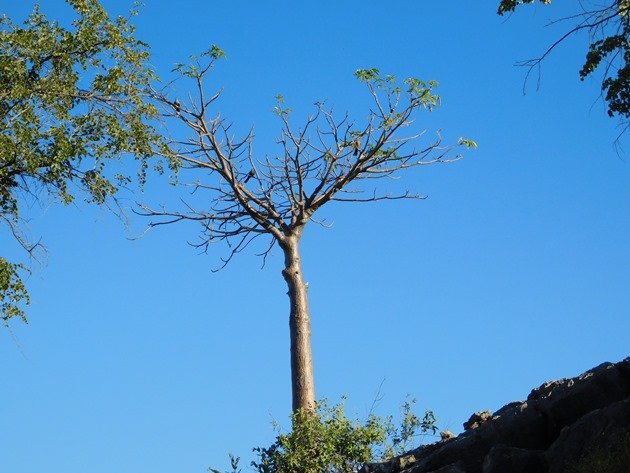
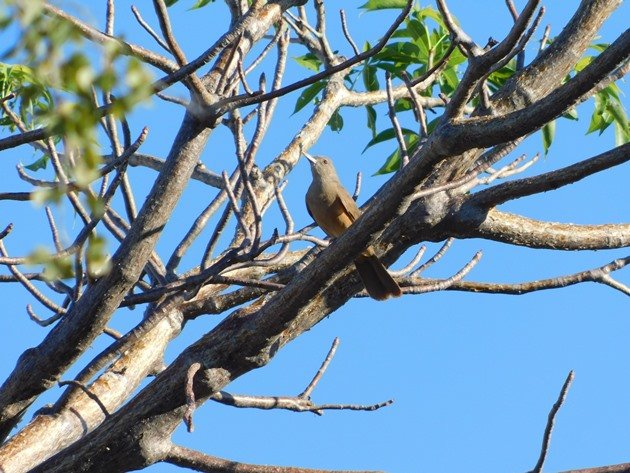
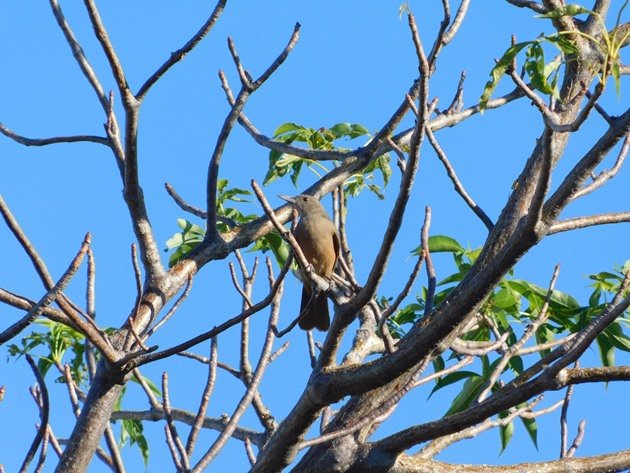
Sandstone Shrike-thrushes
Another bird species that we almost always observe in this location is the Common Bronzewing. We were lucky enough to have four close to the gravel road this time. Although they were feeding in the shadows their size gives them away.
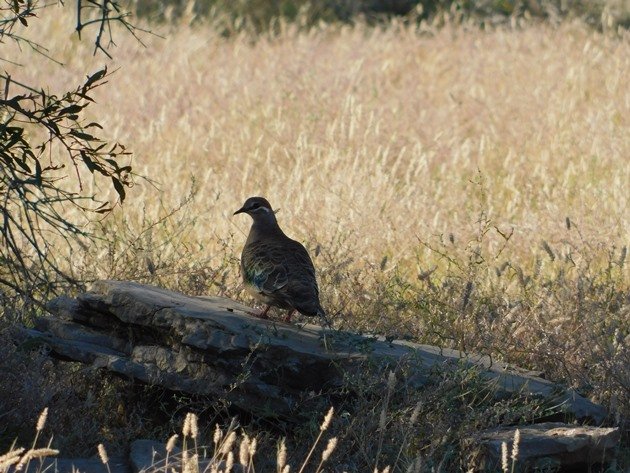
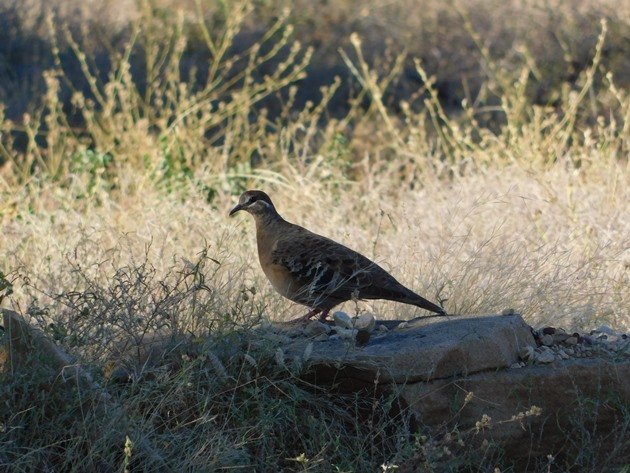
Common Bronzewing
Apart from these specialties that we usually go looking for there are other good birds to be observed. We also encountered Black-faced Woodswallows, Little Woodswallows, Masked Woodswallows, Cockatiels, Grey Shrike-thrush, Galahs, a pair of Australian Bustards, Crested Pigeons, Grey-crowned Babblers, Magpie-larks, White-winged Trillers, Australasian Pipits, Little Corellas, Diamond Doves, Peaceful Doves, Bar-shouldered Doves, Little Friarbirds, Singing Honeyeaters, Grey-fronted Honeyeaters, Brown Honeyeaters, White-gaped Honeyeaters, Yellow-throated Miner, Striated Pardalotes, Red-browed Pardalotes, Zebra Finch, Double-barred Finch, Long-tailed Finch, White-necked Heron, Whistling Kites, Jacky Winter, Bush Stone-curlew, Rufous Songlark and Red-backed Fairywrens to name a few.
As you can see there is a good variety of bird species and it is a picturesque location to pass some time!











We camped at the quarry for a few days around the late 90s. It wasn’t as well known back then so very little traffic. A herd of cows attended every evening for a drink. Great spot, but it was during the wet. Very hot and humid so I didn’t getnto explore the area. Love to go back for a visit, but my time is drawing to a close so I’ll probably never see it again. Webtravelled and camped through this area a few times, along with the GRR and across the border into the territory, best camping and exploring spots in Oz.